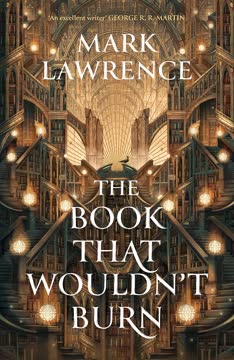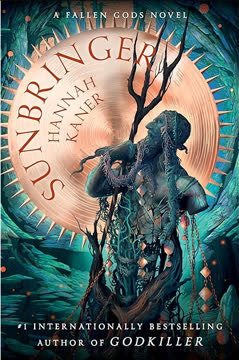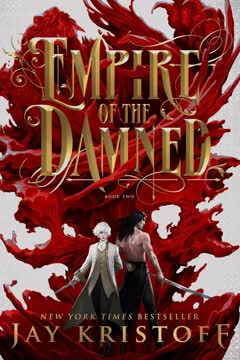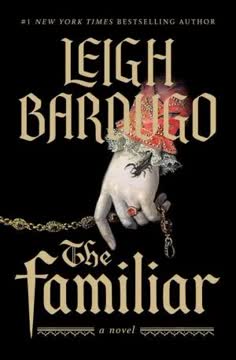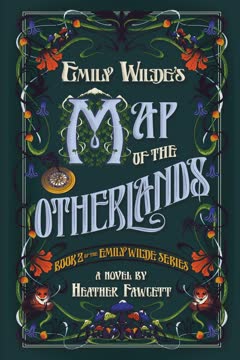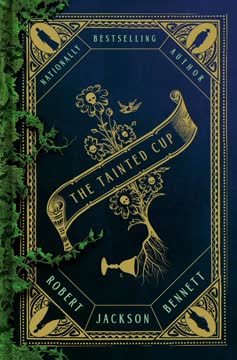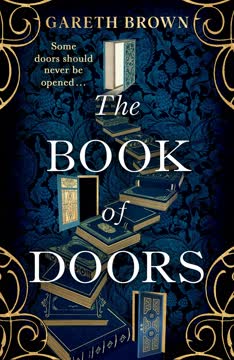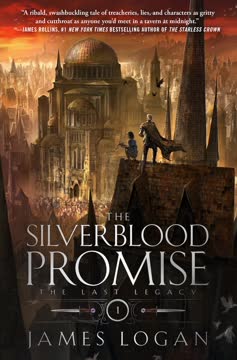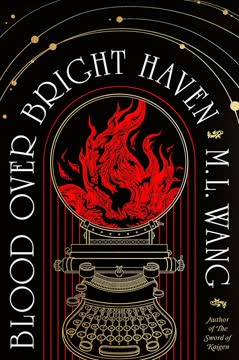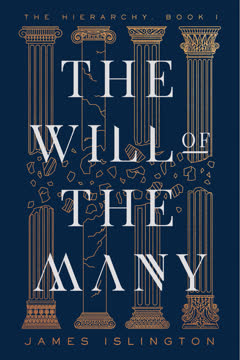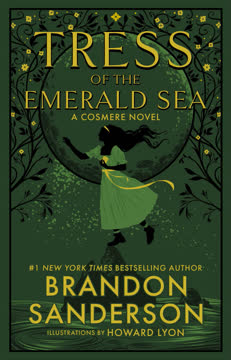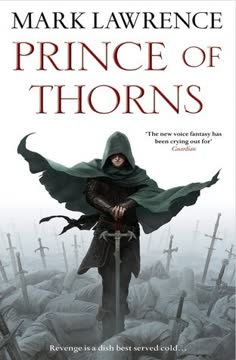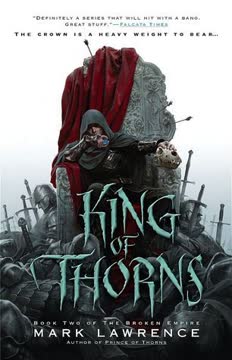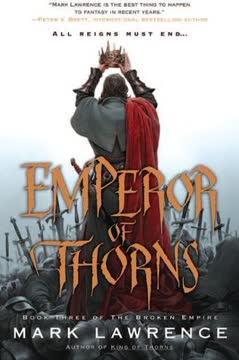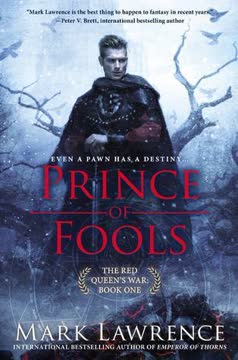Plot Summary
Dust and Destiny
Livira, a fiercely intelligent and stubborn girl, grows up in a harsh, isolated settlement on the Dust—a vast, arid wasteland. Her life is defined by scarcity, struggle, and a burning desire for more than her world offers. She is marked by her unyielding spirit, a memory like a steel trap, and a hunger for knowledge. When her settlement is attacked by sabbers—dog-like humanoids—her world is shattered. Livira is taken captive, her family and friends killed or scattered, and she is thrust into a journey that will test her will and redefine her identity.
The Sabber Invasion
The sabber raid is swift and brutal, leaving Livira and other children bound and marched across the Dust. The sabbers are both monstrous and strangely human, their motives unclear. Livira's anger and hatred for them are forged in these moments of loss and terror. The children are eventually intercepted by city soldiers, who are themselves callous and pragmatic, treating the survivors as burdens to be allocated within the city. Livira's journey is one of survival, but also of awakening—her mind constantly seeking patterns, meaning, and escape.
Chains and Choices
Livira and the other children are marched to Crath City, a place of stone, water, and wonders she could only imagine. The city is both a marvel and a prison, its people divided by class, origin, and prejudice. Livira is marked as a "duster," an outsider, and faces scorn and exclusion. Yet her intelligence and stubbornness catch the eye of Yute, a mysterious librarian, who sees in her the spark of something rare. Through a series of tests and confrontations, Livira is denied the easy paths but is offered a place in the library, the city's true heart and mind.
City of Knowledge
The Library as Living Labyrinth is a world unto itself, a labyrinth of books, secrets, and power. Livira is apprenticed as a trainee, learning to read, write, and navigate the complex hierarchies and rivalries of the librarians. She forms bonds with other trainees—Arpix, Meelan, Jella, Carlotte—each with their own strengths and wounds. The library is both sanctuary and battleground, a place where knowledge is hoarded, weaponized, and sometimes lost. Livira's prodigious memory and relentless questioning set her apart, but also make her a target for those who fear change.
The Library's Labyrinth
Livira's work in the Library as Living Labyrinth is a constant struggle against bureaucracy, tradition, and the inertia of a system designed to keep outsiders out. She learns that the library is not just a collection of books, but a living, shifting entity, with forbidden chambers, hidden mechanisms, and ancient guardians. The search for a single book—Reflections on Solitude—becomes a metaphor for her quest to find her place in a world that resists her at every turn. The labyrinth is both physical and psychological, a test of endurance, wit, and will.
Evar's Prison
Evar, a young man trapped in a vast, timeless library chamber, is haunted by the memory of someone he cannot name—a girl lost to him, a hole in his heart. He and his siblings—Clovis, Kerrol, Starval—were taken by the Mechanism and the Exchange, a device that immerses readers in the worlds of books, and returned decades later, unchanged but marked by the knowledge and trauma of their experiences. The siblings are the last of their kind, raised by the enigmatic Assistant & The Soldier, artificial beings bound to the library's service. Evar's longing for escape and connection drives him to build, search, and risk everything.
Mechanism's Children
Each sibling emerges from the Mechanism and the Exchange with a unique gift: Clovis is a warrior, Starval an assassin, Kerrol a psychologist, Evar a seeker. Their relationships are fraught with rivalry, pain, and unspoken love. The Mechanism and the Exchange is both a wonder and a curse, offering escape from the monotony of the library but also threatening to consume those who enter it. Escapes and Corruption—monstrous entities born from the Mechanism's malfunction—begin to leak into the library, threatening the fragile balance of their world. Evar's search for the lost girl becomes a quest to find meaning, purpose, and a way out.
Escape and Exchange
Evar's discovery of a mysterious book—one that seems to call to him by name—leads him to the Mechanism and the Exchange, a forested realm between worlds and times, where portals connect different libraries, realities, and eras. Here, he meets Livira, now a young woman, and together they unravel the secrets of the Exchange, the true nature of the library, and the Cycles of Destruction and Rebirth that define their worlds. The Exchange is a place of possibility and danger, where expectation shapes reality, and where the past, present, and future are intertwined.
Allocation and Ambition
Livira's brilliance and defiance earn her both allies and enemies. Yute, revealed to be more than human, champions her cause, while Lord Algar and others seek to expel her as a threat to the established order. The allocation system, which sorts children into roles based on arbitrary and biased tests, is exposed as a tool of control. Livira's determination to open the library to all, to break the Cycles of Destruction and Rebirth of exclusion and prejudice, becomes a revolutionary act. Her friendships deepen, her losses mount, and her sense of responsibility grows.
The Book That Wouldn't Burn
The search for the titular book becomes central—a volume that resists destruction, that exists across times and worlds, that contains both Livira's story and Evar's. The Book That Wouldn't Burn is a paradox, a circle, a bridge between realities. It is written and rewritten, lost and found, burned and unburned. Through it, Livira and Evar's lives are bound together, their memories and hopes interwoven. The book is both a weapon and a hope, a testament to the power of stories to endure, connect, and transform.
Allies and Adversaries
As war looms, alliances are tested. Livira's friends—Arpix, Meelan, Jella, Carlotte, Neera, Katrin—face their own trials, some lost to violence, others to the fire of change. Malar, the grizzled soldier who once saved Livira, becomes her protector and companion. The sabbers, once seen only as monsters, are revealed to be people with their own histories, griefs, and dreams. The true enemy is not a race, but the Cycles of Destruction and Rebirth of hatred, ignorance, and fear that the library both preserves and perpetuates.
The Library's Curses
Yute reveals the library's greatest curse: it accelerates progress, giving societies the tools to destroy themselves before they are wise enough to use them. The fire-limit—the point at which knowledge outpaces wisdom—has been reached and breached countless times, each cycle ending in catastrophe. The Library as Living Labyrinth is both memory and temptation, a compromise between the desire to know and the need to forget. Livira and Evar must decide whether to perpetuate the Cycles of Destruction and Rebirth or break it, to use the library's power for healing or for harm.
War at the Gates
The sabber armies, driven by their own desperation and the threat of the skeer—an even more implacable foe—lay siege to Crath City. The city's defenses, bolstered by the library's knowledge, are ultimately overwhelmed. The Library as Living Labyrinth itself becomes a battleground, its chambers set ablaze, its treasures consumed by fire. Livira, Yute, Yamala, and a band of survivors flee into the labyrinth, pursued by both flames and enemies. The burning of the library is both an ending and a beginning, a purging of the old to make way for the new.
The Forest Between
The survivors, human and sabber alike, find refuge in the Mechanism and the Exchange, where the rules of time and space are suspended. Here, Livira and Evar confront the truth of their identities, their histories, and their love. The Exchange is a place of healing and revelation, but also of reckoning. The Cycles of Destruction and Rebirth of violence and loss are laid bare, and the possibility of peace—however fragile—is glimpsed. The Exchange is both a memory and a promise, a place where stories are written, erased, and rewritten.
Ghosts and Revelations
In the Mechanism and the Exchange, Livira and Evar see each other as they truly are—human and sabber, enemy and beloved. The illusions of the past are stripped away, leaving only the raw truth of their connection. The ghosts of the past—lost friends, family, and selves—haunt them, but also guide them towards understanding and forgiveness. The revelation that "sabber" means "enemy" in both languages underscores the tragedy of their worlds, and the hope that new stories can be written.
The Burning of Memory
As the fire consumes the Library as Living Labyrinth, Livira, Evar, and their companions must make impossible choices. Some are lost, others saved. The mechanisms of the library—its assistants, its guardians, its rules—are revealed to be both prison and protection. Livira, merging with an assistant, sacrifices her humanity to save others, becoming both more and less than herself. Evar, driven by love and grief, risks everything to find her. The burning of the library is both literal and metaphorical, a cleansing and a loss.
The Circle Completed
In the aftermath, Livira and Evar are reunited, changed by their journeys and their love. The Book That Wouldn't Burn is both their story and the story of the library—a circle, a paradox, a testament to the endurance of hope. The survivors—human, sabber, assistant—must build anew, forging alliances and understanding in the ashes of the old world. The Library as Living Labyrinth endures, changed but unbroken, its stories waiting to be read, written, and lived again.
Characters
Livira
Livira is the heart of the novel—a girl born in the Dust, marked by loss, resilience, and a burning hunger for knowledge. Her memory is prodigious, her will unbreakable, her curiosity insatiable. She is shaped by trauma—her family and home destroyed by sabbers, her childhood stolen—but refuses to be defined by victimhood. Livira's journey is one of transformation: from outcast to librarian, from student to leader, from human to something more. Her relationships—with Yute, her friends, Malar, and especially Evar—are complex, marked by love, betrayal, and forgiveness. Psychologically, Livira is driven by a need to understand, to connect, and to write her own story in a world that seeks to silence her. Her development is a testament to the power of agency, empathy, and imagination.
Evar
Evar is a young man trapped in a timeless library, his past erased by the Mechanism and the Exchange, his present defined by longing and loss. He is gentle, kind, and deeply lonely, marked by the absence of a girl he cannot remember but cannot stop searching for. Evar's siblings—Clovis, Kerrol, Starval—are both family and rivals, each shaped by their own traumas and gifts. Evar's journey is one of awakening: from passive prisoner to active seeker, from second-best to hero, from sabber to beloved. His relationship with Livira is the novel's emotional core, a love that transcends time, species, and expectation. Psychologically, Evar is defined by his yearning for connection, his capacity for forgiveness, and his willingness to risk everything for those he loves.
Yute
Yute is a librarian of mysterious origin, later revealed to be a former assistant—an immortal being who chose mortality to help humanity. He is wise, patient, and quietly subversive, working to slow the Cycles of Destruction and Rebirth that the library enables. Yute's relationship with Livira is paternal, mentoring her while challenging her to find her own path. His marriage to Yamala, another fallen assistant, is both partnership and rivalry, embodying the tension between memory and progress, caution and ambition. Psychologically, Yute is marked by regret, hope, and a deep sense of responsibility for the world's fate.
Clovis
Clovis is Evar's sister in circumstance if not blood, a survivor of the sabber massacre that destroyed her people. She emerges from the Mechanism and the Exchange as a master of combat, her life defined by the need for revenge. Clovis is fierce, uncompromising, and often brutal, her relationships with her siblings marked by rivalry and pain. Her hatred of sabbers is both a wound and a weapon, blinding her to the possibility of peace. Psychologically, Clovis is trapped by her past, unable to heal until she confronts the truth of her own suffering and the Cycles of Destruction and Rebirth that bind her.
Malar
Malar is a grizzled city soldier who becomes Livira's unlikely guardian and friend. He is tough, foul-mouthed, and deeply pragmatic, shaped by years of violence and loss. Malar's relationship with Livira is complex—he is both mentor and surrogate father, his rough kindness masking a deep well of pain. Psychologically, Malar is marked by survivor's guilt, a longing for purpose, and a capacity for loyalty that surprises even himself. His development is a journey from bitterness to sacrifice, from isolation to connection.
Arpix
Arpix is one of Livira's closest friends in the library, a trainee marked by seriousness, intelligence, and a deep sense of responsibility. He is the group's anchor, often serving as Livira's conscience and sounding board. Arpix's relationship with Livira is platonic but profound, built on mutual respect and shared struggle. Psychologically, Arpix is cautious, methodical, and sometimes rigid, but his loyalty and courage are unwavering.
Yamala
Yamala, like Yute, is a former assistant who chose mortality to intervene in the Cycles of Destruction and Rebirth. As head librarian, she is both gatekeeper and guardian, her authority both respected and feared. Her relationship with Yute is fraught with tension, embodying the conflict between preservation and progress. Psychologically, Yamala is marked by a deep sense of duty, a willingness to sacrifice, and a sorrow for the world's endless suffering.
Starval
Starval, one of Evar's siblings, emerges from the Mechanism and the Exchange as a master of stealth and murder. He is enigmatic, hungry for meaning, and often at odds with his family. Starval's relationship with Evar is marked by rivalry and affection, his skills both a blessing and a curse. Psychologically, Starval is restless, searching for purpose in a world that offers only repetition and loss.
Kerrol
Kerrol, another of Evar's siblings, is a master of the mind, able to read and influence those around him. He is detached, analytical, and often manipulative, his insights both helpful and unsettling. Kerrol's relationship with his siblings is complex—he is both confidant and puppet-master, his motives often opaque. Psychologically, Kerrol is marked by a need for control, a fear of vulnerability, and a longing for genuine connection.
The Assistant & The Soldier
The Assistant & The Soldier are artificial beings created to serve the library, their lives defined by duty, patience, and constraint. They are both caregivers and jailers, raising Evar and his siblings while enforcing the library's rules. Their transformation—choosing mortality to help humanity—marks them as both tragic and heroic. Psychologically, they are marked by a longing for purpose, a capacity for love, and a sorrow for the Cycles of Destruction and Rebirth they cannot break.
Plot Devices
The Library as Living Labyrinth
The Library as Living Labyrinth is more than a setting—it is a character, a labyrinthine world that shapes and is shaped by those within it. Its endless chambers, forbidden doors, and hidden mechanisms serve as metaphors for memory, trauma, and the search for meaning. The library's rules—its allocation system, its cycles of burning and rebuilding, its guardians and guides—reflect the dangers and possibilities of knowledge. The labyrinth is both prison and possibility, a place where stories are written, erased, and rewritten.
The Mechanism and the Exchange
The Mechanism and the Exchange is a device that immerses readers in the worlds of books, blurring the line between fiction and reality. The Exchange is a forested realm between worlds and times, where expectation shapes reality and the past, present, and future are intertwined. These devices allow for travel across realities, encounters with alternate selves, and the rewriting of history. They serve as metaphors for the power of stories to connect, transform, and endure.
Escapes and Corruption
Escapes and Corruption are monstrous entities born from the Mechanism's malfunction, leaking into the library and threatening its balance. They represent the dangers of unchecked knowledge, the consequences of forgetting, and the persistence of unresolved pain. The corruption of assistants by Escapes mirrors the corruption of memory and the Cycles of Destruction and Rebirth that haunt the world.
The Book That Wouldn't Burn
The Book That Wouldn't Burn is both a literal object and a metaphor—a volume that resists destruction, that exists across times and worlds, that contains both Livira's story and Evar's. It is a circle, a bridge, a testament to the power of stories to survive, connect, and heal. The book is both weapon and hope, a reminder that stories can outlast the fires that consume everything else.
Cycles of Destruction and Rebirth
The novel's structure is cyclical, with events repeating across generations, worlds, and realities. The fire-limit—the point at which knowledge outpaces wisdom—marks the end of each cycle, followed by forgetting and rebuilding. The Library as Living Labyrinth is both the cause and the cure, preserving memory while tempting societies to repeat their mistakes. The characters' journeys mirror these cycles, as they struggle to break free, to forgive, and to write new stories.
Translation and Expectation
The Mechanism and the Exchange translates not just words but expectations, allowing Livira and Evar to see each other as they wish to be seen. This device explores the power of language to connect and divide, to create empathy and misunderstanding. The revelation that "sabber" means "enemy" in both languages underscores the tragedy of conflict and the hope of reconciliation.
Analysis
The Book That Wouldn't Burn is a sweeping, multi-layered fantasy that uses the metaphor of the Library as Living Labyrinth to explore [the Cycles of Destruction and Rebirth
Last updated:
FAQ
0. Synopsis & Basic Details
What is The Book That Wouldn't Burn about?
- A Tale of Two Seekers: The Book That Wouldn't Burn follows Livira, a resilient girl from a desert settlement, whose life is upended by a sabber attack, leading her to Crath City and its colossal Library. Simultaneously, Evar, a young man trapped in a timeless Library chamber, searches for a lost memory of a girl, a quest that leads him to a mysterious interdimensional "Exchange."
- Unraveling Ancient Mysteries: Both protagonists are drawn into the Library's hidden depths, discovering its true nature as a nexus of worlds and times, governed by enigmatic artificial beings. Their intertwined journeys reveal a cyclical history of destruction and rebirth, driven by humanity's unchecked pursuit of knowledge and ancient conflicts.
- Love, War, and Identity: As a devastating war between humans and sabbers engulfs Crath City and threatens the Library itself, Livira and Evar must confront their own prejudices, the true identities of their allies and enemies, and the profound connection that binds their destinies across time and species.
Why should I read The Book That Wouldn't Burn?
- Intricate World-Building & Deep Lore: Mark Lawrence crafts a truly unique fantasy world centered around a sentient, labyrinthine library that is both a physical place and a nexus of all knowledge and realities. Readers will be captivated by the layers of history, mythology, and philosophical concepts woven into the narrative.
- Compelling Characters & Emotional Depth: The dual protagonists, Livira and Evar, are exceptionally well-developed, each driven by profound loss, a thirst for understanding, and a yearning for connection. Their emotional journeys, particularly their unexpected bond across species and time, provide a powerful core to the story.
- Philosophical Exploration of Knowledge & Power: Beyond the thrilling plot, the novel delves into profound themes about the nature of knowledge, its dangers, and its potential for both destruction and salvation. It challenges perceptions of good and evil, exploring how history is written and rewritten, making it a thought-provoking read for fans of intellectual fantasy.
What is the background of The Book That Wouldn't Burn?
- A World of Cycles and Forgotten History: The story is set in a world where civilization repeatedly rises and falls, driven by a "fire-limit" where advanced knowledge leads to self-destruction. Crath City, built around the Library, is the latest iteration, its people having forgotten previous cycles and the true origins of their knowledge.
- The Library as a Primal Force: The Library itself is an ancient, possibly infinite entity, predating current civilizations. It acts as a repository of all knowledge across countless worlds and timelines, tended by immortal "assistants" who are bound by ancient compromises between its mythical founders, Irad and Jaspeth.
- Human-Sabber Conflict: The immediate backdrop is a long-standing, escalating war between humans and sabbers (dog-like humanoids). This conflict is fueled by prejudice and misinformation, with both sides believing the other to be monstrous, mirroring the deeper, cyclical conflicts that plague their shared history.
What are the most memorable quotes in The Book That Wouldn't Burn?
- "The first arrow hit a child.": This stark, brutal opening line immediately establishes the novel's grim tone and foreshadows the pervasive violence and loss that define Livira's journey and the world's cyclical nature. It sets a visceral expectation for the story's emotional impact.
- "There are no useless skills, girl. Only talents that have yet to find an application.": Ella's wisdom to young Livira encapsulates the protagonist's inherent potential and resilience, serving as a guiding principle for her relentless pursuit of knowledge and her ability to adapt in the face of overwhelming odds. This quote highlights Livira's core character.
- "The library is our memory. It's all that survives. Perhaps it's part of us.": Yute's profound reflection on the Library's role reveals its symbolic significance as both a repository of collective history and a living entity intertwined with humanity's fate, underscoring the novel's central themes of memory, identity, and the cyclical nature of existence.
What writing style, narrative choices, and literary techniques does Mark Lawrence use?
- Dual Perspective & Intertwined Narratives: Lawrence employs a dual first-person perspective, alternating between Livira and Evar. This narrative choice allows for a rich exploration of contrasting experiences and perceptions, gradually revealing how their seemingly disparate lives are deeply connected across time and reality, enhancing the mystery and emotional resonance of The Book That Wouldn't Burn.
- Philosophical Undercurrents & Moral Ambiguity: The prose is often direct and visceral, particularly in action sequences, yet it is consistently infused with philosophical musings on knowledge, truth, and human nature. Lawrence avoids simplistic good-vs-evil dichotomies, presenting characters and factions with complex motivations and moral ambiguities, inviting readers to question established narratives and themes in The Book That Wouldn't Burn.
- Subtle Foreshadowing & Symbolic Imagery: The author masterfully uses subtle hints, recurring motifs (like dust, fire, and the concept of "circles"), and symbolic imagery (the Library as a living labyrinth, the Exchange as a forest between worlds) to build suspense and deepen thematic layers. This technique rewards careful reading, allowing readers to uncover hidden connections and foreshadowing that enrich the overall analysis of The Book That Wouldn't Burn.
1. Hidden Details & Subtle Connections
What are some minor details that add significant meaning?
- Livira's Name and the Weed: Livira is named after a tenacious weed that "would grow in places where rocks wouldn't," symbolizing her indomitable spirit and resilience. This seemingly minor detail foreshadows her ability to thrive in the harsh environment of the Dust and later, the unforgiving political landscape of the Library, reinforcing her core Livira motivations.
- Ella's Wind-Weed Sculpture: The half-finished wind-weed sculpture Ella gives Livira, which vaguely resembles a young man, subtly foreshadows Evar's eventual appearance and his initial "ghost-like" presence in Livira's perception. It hints at the idea of hidden forms and the shaping of identity, connecting to Evar character study and symbolism.
- Malar's Swearing as a Coping Mechanism: Malar's incessant swearing, initially presented as crude, is later revealed as a deeply ingrained coping mechanism for trauma and fear. His casual obscenities are a shield, a way to maintain control and distance in a brutal world, offering a nuanced insight into Malar motivations and the psychological toll of constant conflict.
What are some subtle foreshadowing and callbacks?
- The "First Arrow Hit a Child" Prologue: This chilling opening line is a direct callback to the sabber attack on Livira's settlement, but also subtly foreshadows the cyclical violence and the vulnerability of innocence throughout the narrative, linking to themes in The Book That Wouldn't Burn and the pervasive nature of conflict.
- The Library's Silence as a Character: The recurring descriptions of the Library's "thick, ancient" silence, which "congealed" or "healed over" disturbances, foreshadows its sentient nature and its role as an impartial, almost indifferent, observer of humanity's cycles. This Library symbolism hints at its deeper, non-human consciousness.
- Yute's Age and the "Old on New Streets" Comment: Yute's remark about needing "new streets to be old on" and his struggle with nostalgia subtly foreshadow his true, ancient identity as a former assistant. This detail hints at his vast lifespan and his unique perspective on time and history, crucial for understanding Yute symbolism and his role in the cycles of destruction and rebirth.
What are some unexpected character connections?
- Yute and Yamala as Former Assistants: The revelation that Deputy Yute and Head Librarian Yamala are married and both former assistants who chose mortality is a profound twist. It recontextualizes their individual motivations, their differing philosophies on the Library's role, and their complex relationship as a microcosm of the larger conflict between Irad and Jaspeth, deepening Yute symbolism and Yamala motivations.
- Serra Leetar as Meelan's Sister: The discovery that Serra Leetar, Lord Algar's ambitious diplomat, is Meelan's sister highlights the pervasive class and social divides within Crath City, even among those from the Dust. It underscores how individuals navigate and are shaped by societal expectations, adding a layer of personal conflict to Meelan character study and themes in The Book That Wouldn't Burn.
- Livira's Connection to the Assistant's Past: Livira's ability to "take back" the Escape's stolen memories while possessing the Assistant's body, and her subsequent understanding of the Assistant's long-held love for Evar, reveals a deep, almost spiritual connection between them. This unexpected bond transcends their physical forms and highlights the Assistant's hidden emotional depth, enriching Livira motivations and The Assistant & The Soldier explained.
Who are the most significant supporting characters?
- The Raven (Edgarallen): More than a mere guide, the Raven is a capricious, ancient mechanical construct that serves as Livira's key to forbidden chambers and the Exchange. Its ability to open doors and its unique personality (including its ear-splitting squawk) make it a vital, unpredictable ally, embodying the Library's hidden magic and the subversion of its rules.
- Volente, the Black Dog: Volente, the Head Librarian's "dog," is revealed to be another powerful, ancient guide, capable of traversing walls and sensing hidden truths. Its loyalty to Livira, despite her "theft," and its ability to reveal the Raven's name, underscore the idea that true connection transcends species and conventional understanding, adding to the symbolism of guides.
- Ella, the Wind-Weed Weaver: Though appearing only briefly at the beginning, Ella's wisdom and the gift of the wind-weed sculpture profoundly influence Livira. Her philosophical outlook on "useless skills" and the hidden meanings in seemingly random things plants the seeds for Livira's later discoveries about the Exchange and the interconnectedness of all things, subtly foreshadowing Livira's journey.
2. Psychological, Emotional, & Relational Analysis
What are some unspoken motivations of the characters?
- Clovis's Fear of Irrelevance: Beneath her fierce desire for vengeance against the sabbers, Clovis harbors a deep, unspoken fear that the war she has trained for her entire life might never happen, leaving her without purpose. Her constant combat training and aggression are a desperate attempt to maintain her identity as a warrior, revealing a core Clovis motivation rooted in trauma and the need for meaning.
- Starval's Search for "Realness": Starval, the assassin, is driven by a profound sense of unreality, finding meaning only in the simulated worlds of the Mechanism. His loyalty to Evar stems from a belief that Evar is the "only one of us that's . . . real," suggesting a deep yearning for authentic connection and purpose beyond his violent skills, a key aspect of Starval character study.
- Yute's Burden of Foresight: Yute's quiet subversion and melancholic wisdom are motivated by the immense burden of his immortal memory, having witnessed countless cycles of destruction. His desire to "slow things down" and nurture peace is an attempt to break this cycle, driven by a deep regret for past failures and a desperate hope for a different future, central to Yute motivations and themes in The Book That Wouldn't Burn.
What psychological complexities do the characters exhibit?
- Livira's Guilt and Resilience: Livira's initial resilience, born from her "weed-like" nature, is complicated by profound guilt over her survival and the destruction of her home. This internal conflict drives her relentless pursuit of knowledge and her need to "fix" things, even as she struggles with the emotional weight of her past, showcasing Livira psychological complexities.
- Evar's Naivety and Deep Longing: Evar, shielded from the harshness of the world by his imprisonment, exhibits a profound naivety that clashes with the deep-seated trauma of his lost memories. His yearning for the unnamed woman is not just romantic but existential, a quest to fill the void left by the Mechanism, revealing the Evar character study as a search for wholeness and identity.
- Malar's Cynicism as a Protective Shell: Malar's gruff, cynical exterior and constant complaints serve as a psychological defense mechanism, protecting a deeply loyal and empathetic core. His willingness to sacrifice himself for Livira, despite his protests, highlights the complex interplay between his hardened worldview and his innate capacity for care, adding depth to Malar character analysis.
What are the major emotional turning points?
- Livira's First Bath and Meal: After days of trauma and deprivation, Livira's first proper bath and meal in Crath City mark a significant emotional shift from pure survival to a nascent sense of self-worth and belonging. This moment, facilitated by Salamonda's unexpected kindness, allows her to process grief and begin to embrace new possibilities, a pivotal point in Livira's emotional journey.
- Evar's Witnessing of Clovis's Past: Evar's ghostly journey into Clovis's childhood, witnessing the brutal sabber massacre that forged her, is a major emotional turning point. It transforms his understanding of his sister's rage and his own past, deepening his empathy and solidifying his resolve to protect Livira, even as it reopens his own wounds, central to Evar character development.
- The Kiss in the Empty City: The kiss between Livira and Evar in the deserted ancient city is a powerful emotional climax, symbolizing their connection across time and species. It represents a moment of pure, unburdened intimacy before the full weight of their respective realities and prejudices crashes down, highlighting the novel's exploration of love and identity in The Book That Wouldn't Burn.
How do relationship dynamics evolve?
- Livira and Malar: From Captor to Protector: Their relationship evolves from initial antagonism and Malar's casual indifference to a deep, if gruff, bond of mutual respect and protection. Malar's repeated interventions to save Livira, culminating in his near-fatal injury, demonstrate his unspoken loyalty, transforming him into a surrogate father figure and highlighting the power of unexpected alliances in The Book That Wouldn't Burn.
- Evar and His Siblings: From Dysfunction to Shared Purpose: The initially fractured and competitive relationships between Evar, Clovis, Kerrol, and Starval, born from their shared trauma in the Mechanism, gradually shift towards a fragile, shared purpose. While their individual methods and motivations still clash, the threat to the Library and Evar's connection to Livira force them to unite, revealing the complex Evar relationship dynamics and the enduring bonds of chosen family.
- Livira and Arpix: Intellectual Partnership and Unspoken Affection: Their bond deepens from a mentor-mentee relationship into a profound intellectual partnership and unspoken affection. Arpix's unwavering loyalty, his willingness to risk expulsion for Livira, and his quiet support underscore the strength of their platonic connection, showcasing Arpix character development and the importance of intellectual companionship.
3. Interpretation & Debate
Which parts of the story remain ambiguous or open-ended?
- The True Nature of the Exchange: While described as a "forest between worlds and times," the Exchange's ultimate reality remains ambiguous. Is it a physical place, a collective dream, a manifestation of the Library's consciousness, or a blend of all three? The narrative suggests it adapts to the expectations of its visitors, leaving its fundamental nature open to reader interpretation and Exchange explained.
- The Fate of the Library's Unexplored Chambers: The vast, uncatalogued, and often forbidden chambers of the Library, including those accessible only by sabbers or other species, remain largely unexplored. The story hints at countless secrets and dangers within these depths, leaving the full extent of the Library's knowledge and its ultimate fate open-ended, inviting speculation on Library symbolism and its infinite possibilities.
- The Long-Term Impact of the Cycles: While the novel clearly establishes the Cycles of Destruction and Rebirth, the question of whether Livira and Evar's actions truly break this cycle or merely initiate a new, slightly different iteration remains open. The ending offers hope but also acknowledges the inherent human tendency towards conflict, leaving the ultimate success of their efforts a matter of ongoing debate and themes in The Book That Wouldn't Burn.
What are some debatable, controversial scenes or moments in The Book That Wouldn't Burn?
- Yute's Decision to Make Livira a Librarian: Yute's choice to appoint Livira as a librarian, defying the king and risking political instability, is highly debatable. Was it an act of hubris, using Livira as a pawn in his larger game against the Library's "curse," or a necessary, courageous act to introduce fresh perspective and break the cycle of prejudice? This moment highlights Yute motivations and the ethical complexities of his actions.
- Mayland's Act of Fratricide and Destruction: Mayland's murder of Yamala and his stated goal to "raze the library to the ground" is a controversial act. While presented as a radical solution to break the destructive cycles, his methods are brutal and his philosophy extreme. This challenges readers to consider whether such extreme measures are ever justified for a perceived "greater good," sparking debate on Mayland character study and the morality of his choices.
- The Exchange's "Translation" of Species: The revelation that the Exchange translates perceptions, making humans appear as sabbers to Evar and vice-versa, is a powerful but potentially controversial plot device. It forces characters (and readers) to confront deep-seated prejudices, but also raises questions about the nature of objective truth and whether genuine understanding is possible when reality itself is so malleable, central to translation and expectation themes.
The Book That Wouldn't Burn Ending Explained: How It Ends & What It Means
- Sacrifice and Rebirth: The ending of The Book That Wouldn't Burn sees Livira, possessing an Assistant's body, sacrifice her human identity to save her friends from the burning Library. She uses her blood to create a portal to the Exchange, sending the survivors to safety. This act symbolizes a profound commitment to others and a willingness to transcend her own species for a greater purpose, embodying Livira motivations and the theme of rebirth.
- The Cycle Continues, but with Hope: Evar, driven by love and guilt, follows Livira into the Exchange, where they are reunited. The Library continues to burn and rebuild, a testament to its eternal, cyclical nature. However, the survival of both human and canith (sabber) refugees, guided by Yute and Yamala (now fully committed to their roles as immortal guardians), suggests a new beginning where cooperation might finally break the ancient cycle of destruction. This offers a nuanced The Book That Wouldn't Burn ending explained that balances grim reality with enduring hope.
- The Power of Story and Connection: The titular book, which Livira wrote and Evar carried, becomes a tangible link between their lives and a symbol of their shared journey. It represents the enduring power of stories to shape reality, connect individuals across time and species, and offer a path towards understanding and healing. Their love, forged through shared trauma and mutual revelation, becomes a beacon for a future where empathy might overcome prejudice, a core themes in The Book That Wouldn't Burn message.
Review Summary
The Book That Wouldn't Burn received mostly positive reviews, with readers praising its beautiful prose, intricate world-building, and compelling characters. Many found the story captivating, particularly in its exploration of themes like knowledge, power, and the magic of libraries. Some readers noted pacing issues, especially in the first half, and felt the romance was underdeveloped. Despite these criticisms, most reviewers considered it one of Mark Lawrence's best works to date, leaving them eager for the sequel.
The Library Trilogy Series
Similar Books
Download PDF
Download EPUB
.epub digital book format is ideal for reading ebooks on phones, tablets, and e-readers.
